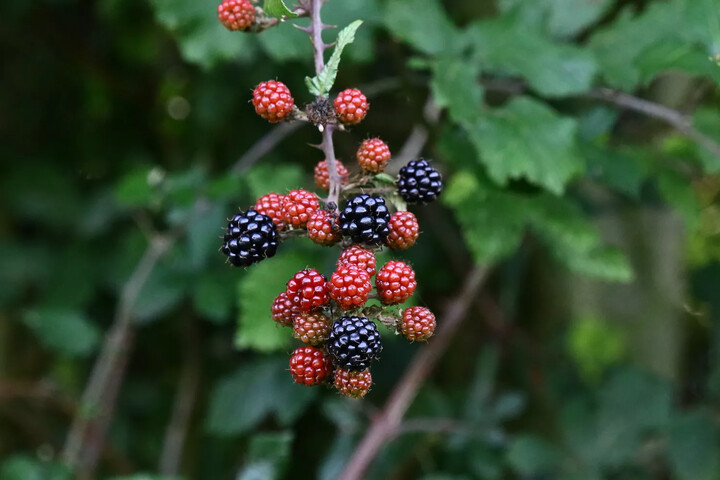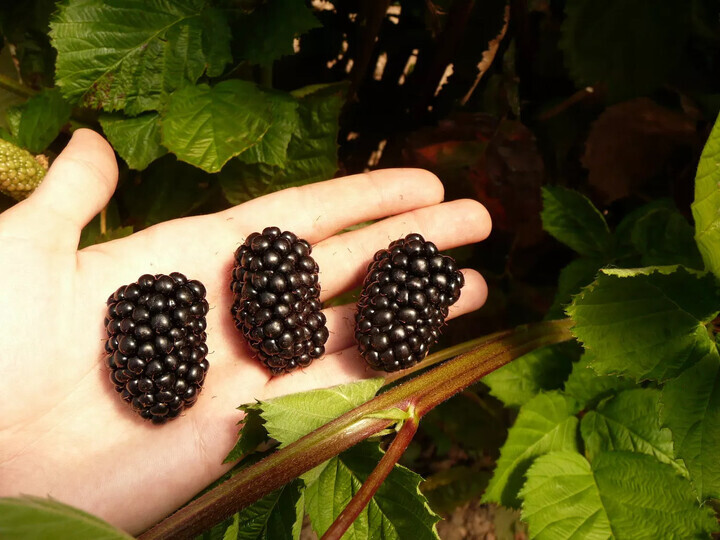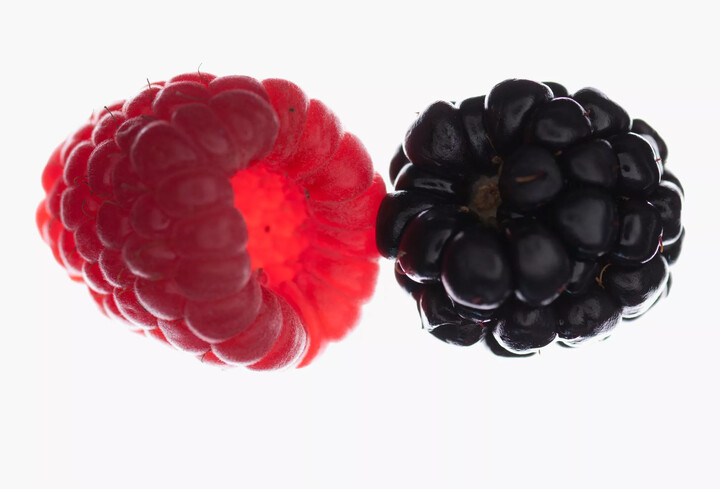Homegrown fruit always beats market fruit for freshness and taste, but not everyone has the space to grow a fruit tree or a melon vine. For that reason, berries are the gateway fruit for many gardeners, and none are easier to grow in the home garden than the blackberry. As native North American plants that can typically be harvested from June to August, they are primed to grow in your yard with little extra maintenance. All you need to grow summer blackberries for your pies, jams, and smoothies is a spot with full sun and a good supply of soil amendments like compost or leaf mold.
Botanical name: Rubus Fruticosus
Common name: Blackberry
Plant type: Perennial shrub
Mature size: Three to five feet
Sun exposure: Full sun
Soil type: Rich and loamy
Soil pH: Slightly acidic; 5.5 to 7.0
Bloom time: Spring
Flower color: White
Hardiness zones: 5 to 9
Native area: North America, especially the Pacific Northwest

Care
As members of the Rosaceae family, the cultivation of blackberries resembles that of rose bushes. Fortunately, blackberries are closer to wild roses in their ease of care than they are to a hybrid tea rose. Blackberries will tolerate many growing conditions, but the harvest of a struggling blackberry plant will be disappointing compared to the harvest of a pampered plant. Plenty of sunshine, regular irrigation, and rich loamy soil will give plants the energy and nutrients they need to yield sweet, jumbo blackberries.
Light
Sites with full sun are best for productive blackberry bushes. Some afternoon shade is tolerated, especially in areas with hot summers.
Soil
Careful site selection will ensure a long life for your blackberries, which usually live for about a decade with proper care. Soil should have good drainage. An elevated site or raised beds will not only help drainage but will also prevent late spring frosts from damaging flower buds. Remove all weeds that might draw nutrients or water away from your blackberries, as their shallow roots are susceptible to this competition.
Water
Blackberries need moderate amounts of water, around an inch a week provided either by rainfall or from drip irrigation. Blackberries do not fare well in wet soils.
Temperature and Humidity
Because of their shallow root systems, blackberries don't do well in areas where temperatures go below zero degrees routinely. Cold winter temperatures combined with wet spring soils may lead to plant death. The reverse environment of hot, dry winds are also unfavorable for blackberry growing and may result in stunted, seedy fruits.
Fertilizer
Fertilize your blackberries in the spring when plants are emerging from dormancy, using a balanced 10-10-10 formula. Fertilize plants again in the fall with an application of manure and compost, which will also suppress weeds and improve soil tilth.
Propagating
It's easy to propagate blackberry plants from stem cuttings. Cut a four-inch piece from the end of the stem in late spring when temperatures are mild and rainfall is plenty. Plant it in the soil, and keep it moist. Roots will form in two to four weeks.
Varieties

Blackberries fall into two categories: primocane, which produces fruit the first year and is fall-bearing or everbearing, and floricane, which produce fruit the second year and are summer-bearing.
'Shawnee' is resistant to cold, and has self-supporting thorny canes. 'Natchez' is thornless and erect, and will form a hedgerow as it spreads by suckers. Semi-erect thornless varieties like 'Chester' and 'Triple Crown' grow as a clump, and benefit from a trellis. Primocane varieties like 'Prime-Ark Traveler' produce fruit on new and old canes throughout the season.
Toxicity of Blackberries and Its Leaves
Blackberry leaves are edible and are sometimes dried for use as a tea ingredient.
Pruning
Pruning keeps blackberry plants a manageable size and improves fruit quality. Prune old canes that have previously born fruit to the ground to make room for young canes. In the spring, prune trailing young canes back to about three feet to reduce tangling. Prune erect varieties back to about three feet in the summer, in a process called tipping.
Harvesting
Because they are highly perishable, it's important to follow the development of your ripening blackberries carefully. Immature blackberries start out green, then transition to red before maturing to a deep, glossy black. Blackberries do not continue to ripen after harvest, so only pick the berries after they have turned completely black. Berries last about seven days after harvest in the refrigerator.
Being Grown in Containers
When growing blackberries in containers, choose a compact cultivar like Baby Cakes? that does not need pruning. Choose large containers that hold at least five gallons of soil to prevent drying out.
Growing From Seeds
Blackberries are sold as dormant bare roots or as potted plants. If you have the patience to grow blackberries from seed, plant them in the ground in the fall. They require a period of cold dormancy to germinate.
Common Pests and Diseases
Blackberries are prone to anthracnose, stem blight, and crown gall. Prevent disease by purchasing disease-free plant stock from reputable nurseries, and planting your blackberries away from areas with wild brambles. Insect pests include stink bugs and raspberry crown borers. Healthy vigorous plants are less attractive to insect attack.
Blackberries vs. Raspberries

Both blackberries and raspberries belong to the Rubus genus. Blackberry and raspberry plants look very similar, both featuring thorny canes and compound leaves with toothed edges in groups of three or five. One key difference between the fruits of blackberries and raspberries is the way the fruits are formed. The tiny globes of the fruits, called drupelets, are attached to a white core in blackberries. Raspberries, including black raspberries, form drupelets with a hollow core.